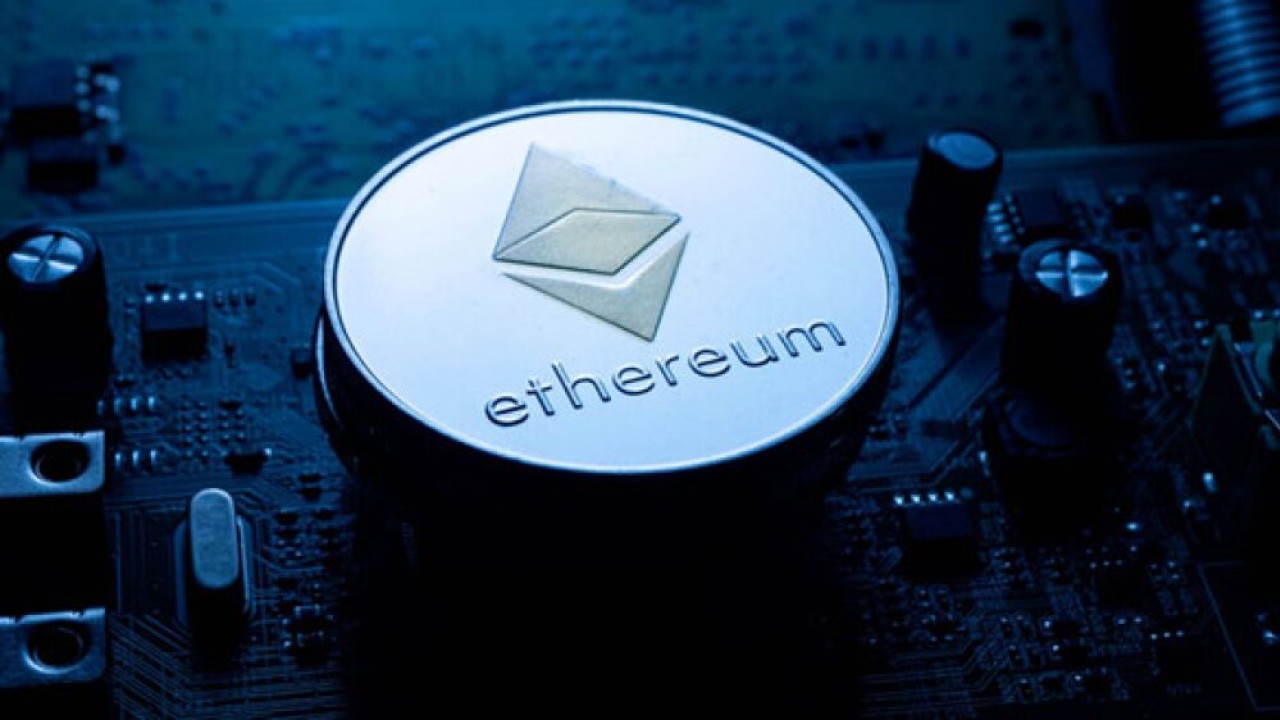Investors and enthusiasts of the cryptocurrency world often face a common challenge: how to deal with the roller coaster ride of price fluctuations. Ethereum, one of the leading cryptocurrencies, is no stranger to this volatility.
But did you know that stablecoin solutions play a crucial role in bringing some balance to Ethereum's price swings? Our blog post will explore these digital superheroes of stability and how they create a more predictable environment for Ethereum transactions.
Stablecoins are like anchors in the stormy sea of crypto markets, designed to hold steady when everything else seems to be moving. By tethering their value to less volatile assets like fiat currencies or commodities, they provide a haven during market turbulence.
In this article, we’ll unpack the vital role these stable players have in stabilizing Ethereum prices and fostering growth within decentralized finance (DeFi). Get ready for insights that could change how you see your crypto investments!
Key Takeaways
- Stablecoins are digital currencies that keep their value steady by being linked to less changing things like regular money or gold. This steadiness helps make Ethereum's prices more predictable, especially during big price changes in the cryptocurrency world.
- Tether and DAI are two main examples of stablecoins affecting Ethereum. Tether is tied to the US dollar and keeps its balance by having equal cash reserves. DAI uses smart contracts on the Ethereum blockchain, allowing users to lock up other cryptocurrencies as collateral to keep its value stable.
- In decentralized finance (DeFi), stablecoins give people a reliable way to borrow, lend, and trade without going through traditional banks. They act as safe havens amid the usual ups and downs of cryptocurrencies like Bitcoin and Ethereum, making financial services more accessible to everyone.
- Stablecoins help solve major problems in global money transfers by offering a steady digital currency option across different countries, promoting financial inclusion for people without access to traditional banking services.
- Through their unique design and operation methods, stablecoins like Tether and DAI show how digital currencies can create a more stable environment for transactions within the volatile cryptocurrency market.
Understanding Stablecoins and Their Role in the Crypto Market
Stablecoins are digital units of value, often pegged to an underlying asset. They serve to maintain stability in the volatile realm of cryptocurrencies, offering a more secure option for investors and users alike.
Definition of stablecoins
Stablecoins are digital currencies that aim to maintain a stable value compared to official currencies. They use blockchain technology and stabilization tools like reserve assets or algorithmic formulas.
This approach helps keep their value steady, unlike traditional cryptocurrencies which can be very volatile.
These digital units of value are often pegged to an asset such as fiat currency or gold. By doing so, stablecoins offer the benefits of cryptocurrency, like fast transactions and security from blockchain cryptography, without the wild price swings found in assets like Bitcoin or Ethereum.
Functions and uses of stablecoins
Stablecoins serve as a medium of exchange, providing stability for users making transactions in the cryptocurrency realm. They are utilized to mitigate price volatility and offer a reliable means for trading digital assets without exposure to potential value fluctuations.
Furthermore, stablecoins are used to facilitate cross-border payments due to their stable nature, offering a more predictable value than traditional cryptocurrencies like Ethereum and Bitcoin.
Their role extends beyond the crypto market, being employed in decentralized finance (DeFi) applications and as a store of value for investors seeking less volatile options.
Comparison to traditional cryptocurrencies
Stablecoins offer a unique approach to digital currency, aiming for stability in a market known for volatility. Below is a comparison of stablecoins to traditional cryptocurrencies like Ethereum and Bitcoin, highlighting their key differences.
|
Feature |
Stablecoins |
Traditional Cryptocurrencies |
|
Stability Mechanism |
Use reserve assets or algorithmic formulas |
Subject to market demand and supply dynamics |
|
Price Volatility |
Low volatility, pegged to underlying assets |
High volatility, price changes frequently |
|
Primary Use Case |
Medium of exchange, store of value |
Investment, speculative trading |
|
Underlying Asset |
Fiat currency, commodities |
None, value derived from blockchain network |
|
Liquidity |
Can have low market liquidity |
Usually high market liquidity |
Stablecoins stand out for their stability and are pegged to an asset, contrasting with the inherent volatility of traditional cryptocurrencies. Next, we'll explore how these characteristics impact Ethereum's price stability.
The Impact of Stablecoins on Ethereum Price Stability
Stablecoins play a crucial role in maintaining Ethereum's value stability and are integral to decentralized finance. Tether and DAI offer compelling case studies of stablecoin solutions impacting Ethereum price stability.
How stablecoins help maintain a stable value for Ethereum
Stablecoins, such as Tether and DAI, play a crucial role in maintaining Ethereum's stable value. They are designed to mitigate price volatility by pegging their value to fiat currencies or other assets.
By providing a reliable and steady digital representation of traditional currencies, stablecoins contribute to stabilizing the overall value of Ethereum. This is particularly important in decentralized finance (DeFi) where stablecoins act as a bridge between the volatile crypto world and traditional financial systems, ensuring more predictable and secure transactions.
Furthermore, stablecoins help address issues such as price slippage and central bank intervention by offering a more dependable alternative for transactions within the Ethereum ecosystem.
Role of stablecoins in decentralized finance (DeFi)
Stablecoins play a crucial role in decentralized finance (DeFi) by providing stability to digital assets, enabling users to access financial services without the need for traditional banks.
Unlike volatile cryptocurrencies like Ethereum and Bitcoin, stablecoins offer a reliable value that supports lending, borrowing, and trading within the DeFi ecosystem. Tether and DAI are prime examples of stablecoins used in DeFi applications, influencing price stability and expanding financial opportunities across diverse markets.
In the ever-evolving realm of decentralized finance (DeFi), stablecoins serve as foundational pillars supporting various protocols and applications. Their ability to maintain a consistent value allows users to engage in DeFi activities while minimizing exposure to extreme market fluctuations — an essential component for creating accessible and reliable financial solutions.
Case studies: Tether and DAI
Tether:
- Tether (USDT) is a widely - used stablecoin in the cryptocurrency market.
- It is pegged to the US dollar and operates as a cryptocurrency token on the Ethereum blockchain.
- Tether maintains stability by holding reserves of traditional currency equal to the number of Tether tokens in circulation.
- Although it has faced controversy regarding its reserve holdings, Tether remains popular for trading and as a stable-value storage in the crypto space.
- Its transparency and auditability are crucial factors in maintaining public trust and stability.
DAI:
- DAI is a decentralized stablecoin that operates on the Ethereum blockchain using smart contracts.
- It maintains stability through an algorithmic mechanism rather than relying on physical reserves.
- DAI is collateralized by other cryptocurrencies, allowing users to lock up digital assets to generate DAI loans.
- This decentralized approach provides stability while avoiding reliance on centralized entities such as banks or governments.
- DAI's unique model has attracted attention within the DeFi sector, where it plays a crucial role in lending protocols and decentralized exchanges.
These case studies demonstrate different approaches to stablecoin design and operation, showcasing their impact on price stability within the cryptocurrency market while catering to distinct user needs and preferences.
Conclusion
Stablecoins play a crucial role in maintaining Ethereum price stability. They utilize various strategies and tools to ensure value stability and have implications for decentralized finance.
Tether and DAI are notable examples of their impact. These practical solutions can significantly influence the cryptocurrency market's stability, providing ease of use and efficiency in stabilizing value.
Implementation of stablecoin solutions is essential for addressing volatility issues within the crypto realm, potentially leading to substantial improvements.
Kaynak: Bülten













